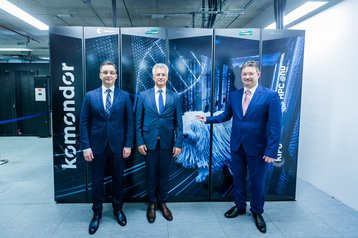The Hungarian government has inaugurated a new supercomputer, known as Komondor.
The 5 petaflops system, named after the native Komondor sheepdog, was officially inaugurated last week in Debrecen.
The high-performance computing (HPC) machine is located at the center of the Government IT Development Agency (KIFU) on the campus of the University of Debrecen in Hungary's second-largest city, and cost a reported 4.7 billion forint ($12.8 million).
Komondor has 5 petaflops of capacity and access speeds of around 100Gbps and is based on the Cray EX system, similar to that of the Frontier supercomputer.
Installation and testing of the system started in September 2022. Around 80 percent of the capacity will be provided by the GPU-accelerated partition, but the system will also have a CPU-based partition, as well as a dedicated artificial intelligence and data analysis partition.
The GPU partition will include 50 nodes, each with a 64-core AMD Epyc 7763 and four Nvidia A100 GPUs, totaling a performance of 4 petaflops.
The CPU partition will have 140 nodes with two 64-core AMD Epyc 7763, totaling a performance of 0.7 petaflops. The remaining capacity will be generated by the Artificial Intelligence (two HPE Apollo 6500 Gen10 plus nodes, each with two 64-core AMD EPYC 7763 and eight Nvidia A100 GPUs) and Big Data partitions (One SMP/NUMA node with 12 18-core Intel Xeon Gold 6254 CPU.
The supercomputer also has 10 petabytes of storage, and the waste heat generated by the HPC will be used to help heat the neighboring municipal swimming pool.
According to the information provided by KIFU, the Komondor will only require around 300kW of power. Around three-quarters of the supercomputer’s capacity will be available to researchers around the country, while the rest will be available to businesses.
"The result of a development process of more than 2 years is that today we can hand over Komondor to users. With this computer, which also has outstanding performance at the regional level, we can conduct in-depth research such as speech and face recognition, climate research, telecommunications, traffic management, energy, production optimization, drug research, or precision medicine. Traditional computers are not suitable for these," said Dr. Endre Spaller, president of the Government Information Technology Development Agency.
The system is ranked 199th on the latest Top500 list.

